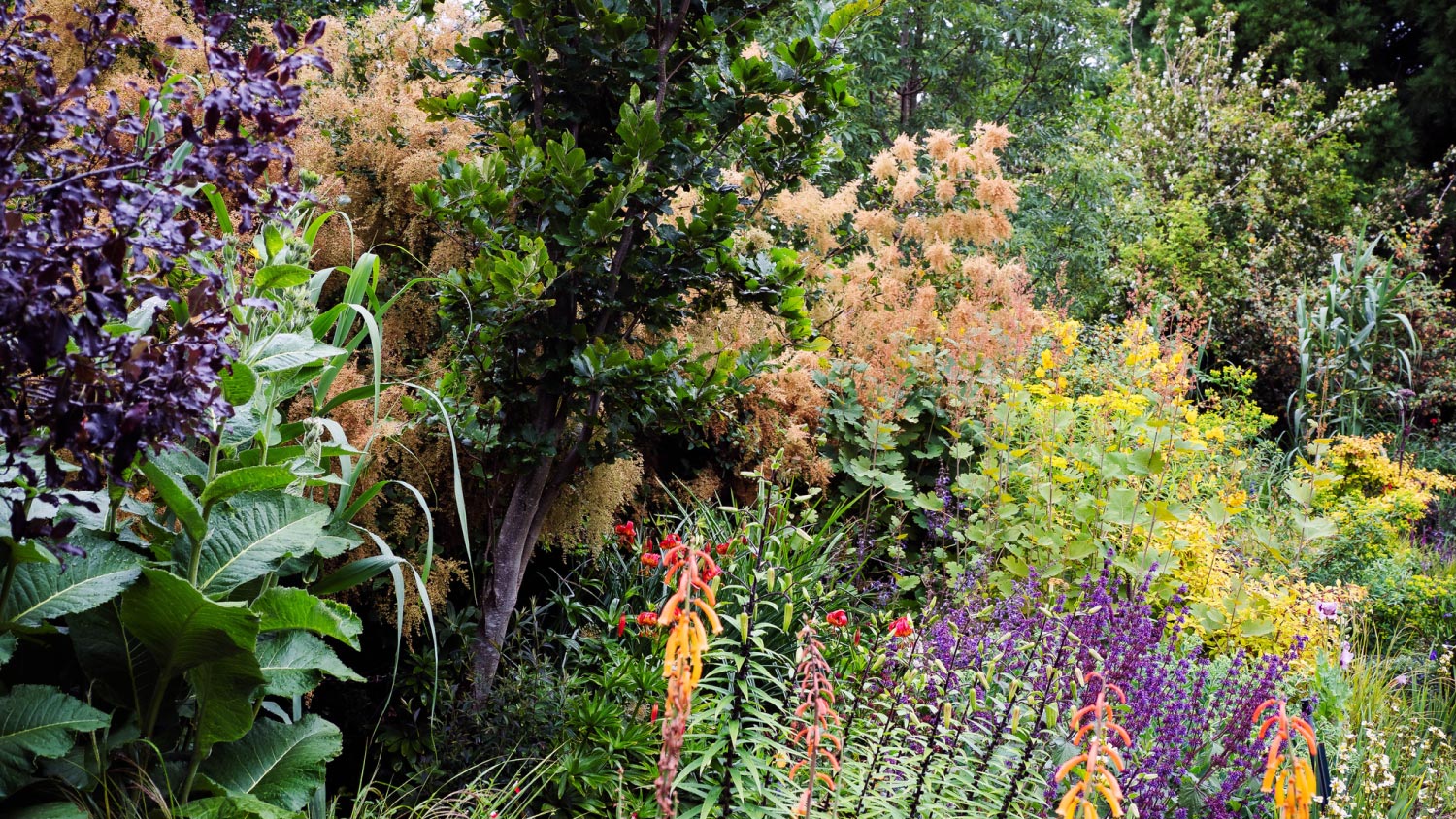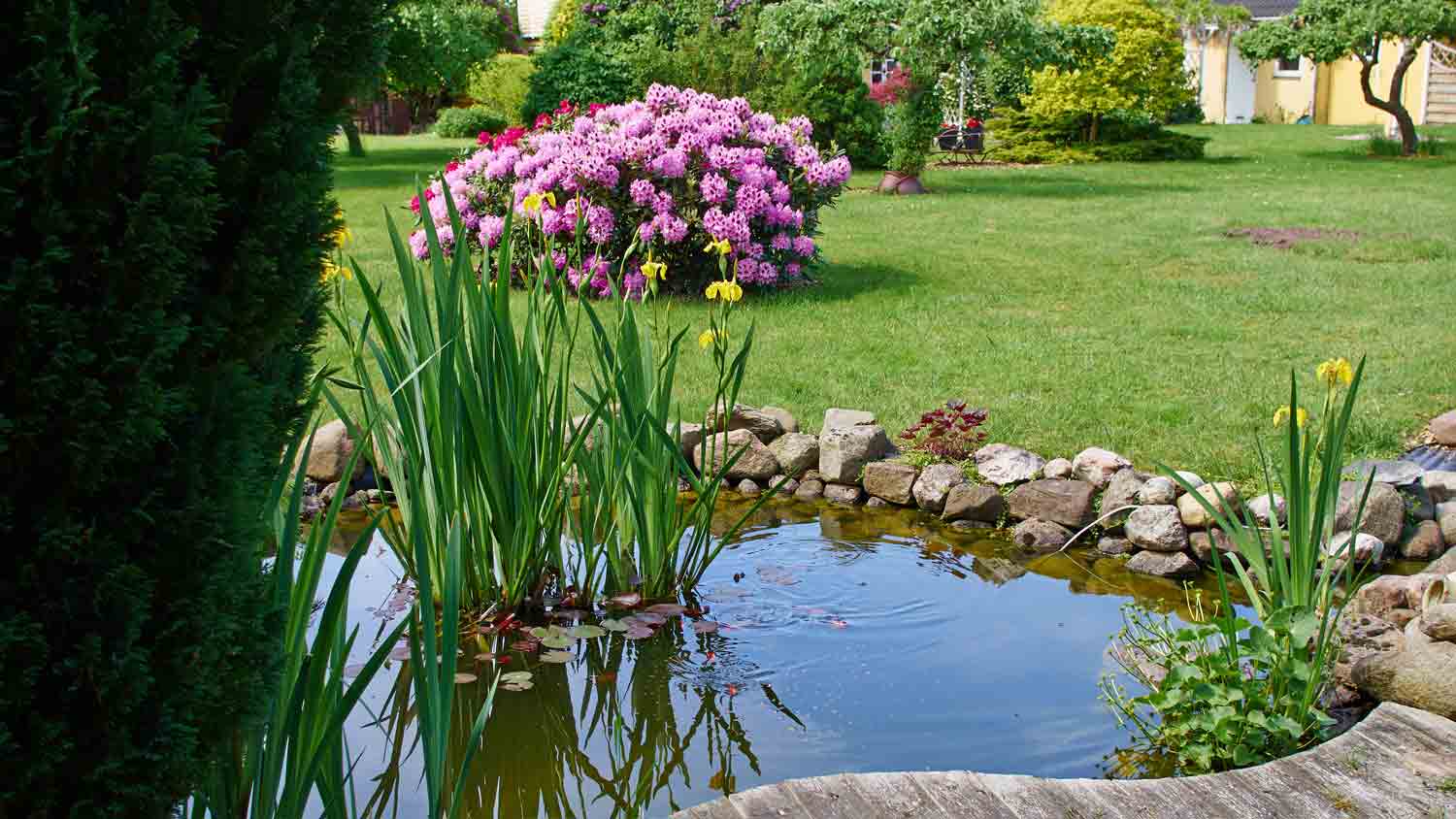
Ivy might look pretty, but you probably don’t want it in your garden. Learn how much it’ll cost to remove ivy by type, treatment method, and more.
Make your yard sparkle with flowers in gemstone hues


Jewel gardens include flowering plants in vibrant hues.
To protect flowers from wind, install trees and shrubs.
Use understated filler plants, like evergreen shrubs, as backdrops.
Mulch, deadhead, and annually enrich the soil.
Imagine strolling through a garden with blooms the colors of semi-precious stones. Featuring a riot of hues and textures, these tapestry-like gardens are vibrant and eye-catching. Read on for tips on which jewel-toned plants to include, costs, and more.
Jewel-toned gardening involves choosing plants and flowers in vibrant gemstone-inspired colors like deep blues, greens, and reds. Whether on your patio or in your front or back yard, adding jewel-colored plants will boost curb appeal and upgrade your space.
Start by picking plants in the hues of semi-precious stones (amber, sapphire, amethyst, ruby, pink, peridot), making sure they’ll thrive in your climate. For a constant supply of color, aim to include varieties that bloom at different times from late spring through summer. Think tulips and alliums in late spring and dahlias in summer through fall, for instance.
Here are some plants to consider, with the jewel tones they come in and their USDA Plant Hardiness Zones:
Tulip: pink, red, yellow, orange (3–8)
Dahlia: pink, red, orange, yellow (8–11)
Zinnia: pink, red, purple, orange, yellow, green (2–11)
Rose: magenta, yellow, pink, purple, orange, red (7–9)
Crocosmia: orange, red (4–9)
Gladiolus: orange, pink, purple, red (6–9)
Kniphofia laxiflora: orange, yellow, red (5–9)
Harlequin flower: red, orange, yellow, lavender (7–11)
Calendula: orange (8–10)
Canna: orange, yellow, red (9–10)
Allium: purple (3–8)
Echinacea (Coneflower): purple-pink (5–8)
Lily: orange, red, purple, yellow (8–11)
Honey bell bush: yellow, orange (8-plus)
Butterfly bush: purple, pink, yellow (5–9)
Sunflower: gold (4–9)
Freesia: red, purple, pink, yellow (9–10)
Hydrangea: pink, purple, blue, red (3–9)
Flowering finger: red, orange, yellow (7–10)
Tithonia (Mexican sunflower): orange, red (3–10)
Rudbeckia: yellow, orange (4–9)
Delphinium: purple, blue (3–7)
Nerine sarniensis: red, pink (8–10)
Helenium: orange, red (3–9)
Glaucidium palmatum: purple (6–9)
Clematis: purple, pink (4–9)
Cypripedium: pink, magenta (2–6)
Euphorbia: green (7–10)

Fashion your own rainbow of a garden on your property.
Pick a sunny, sheltered space. Ideally, the soil should be loamy, featuring a balance of sand, clay, silt, and humus. Sandy loam, as it’s called, features high calcium and pH levels with a gritty texture. You can expect to spend an average of $2,000 to create a 5-by-12-foot garden bed, according to HomeAdvisor. Hire a local gardener to help create your dream jewel-toned garden.
Plant windbreaks at a distance around the perimeter to shield your future blooms from the wind. Choose evergreen trees and shrubs that will thrive in your USDA Plant Hardiness Zone, such as Colorado blue spruce, ponderosa pine, and arborvitae. Plant in two to three staggered rows.
Just as white space in art galleries helps art pop, understated shrubs in jewel gardens let colorful blooms shine. Choose plants that serve as a subtle green backdrop, like boxwood or holly.
If you don’t have the space or budget for a bed, you can always go the container gardening route. Plant flowers in pots and group them close together for visual impact. Choose understated pots so the blooms can hog the spotlight.
Wait until the first frost has passed before planting annuals. Then, install flowering plants in irregular groups (called “drifts”) along your garden borders. Since you won’t include as many types of plants along the edges, your garden will be less chaotic, and each plant variety will make more of an impact.
Support plants with heavy blooms, like dahlias, delphiniums, zinnias, and lilies, with stakes (about $25 for 20 stakes). For climbers, like clematis, use trellises (about $15 to $25 each).
During the summer, add 2 to 3 inches of mulch ($30 to $150 per cubic yard on average) around plants to help keep the soil cool and moist. Check your garden frequently, deadheading spent blooms and treating plants with a high potassium fertilizer (about $10 for three pounds) every two weeks.
In the fall, cut back plants, letting your garden hibernate until spring. To improve the condition of your soil, amend it each year. In late fall, after your plants have died, pull them from the ground and place them on top of the soil.
Make compost for your garden, then add a 2-inch layer to the surface. Wet the area well, then leave in place over the winter. In the spring, turn the soil with a shovel to a depth of 6 to 8 inches.
From average costs to expert advice, get all the answers you need to get your job done.

Ivy might look pretty, but you probably don’t want it in your garden. Learn how much it’ll cost to remove ivy by type, treatment method, and more.

What are average sod installation prices? Learn how much sod costs based on factors like square footage, land prep, land condition, and more.

From your flower beds to your walkway, river rocks make a classic addition to your landscape. Learn about the cost to install river rock to set a proper budget.

When building a pond, you’ll have to choose a pond liner, which come in various materials and sizes. So, what size pond liner do you need? Let’s break it down.

Older homeowners want to create accessible, low-upkeep outdoor spaces that grow with them. Discover six landscape designs for enjoying your home and nature.

Hiring a pro isn’t necessary when removing holly bushes. This guide can help you make quick work of the holly bush removal process.